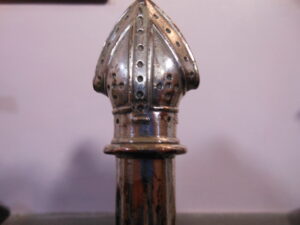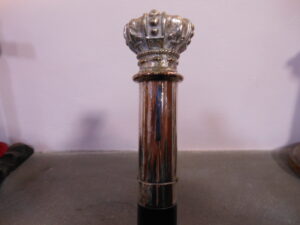Other historical items
THIS PAGE is ‘WORK IN PROGRESS’
Belfry Stone
When the old chapel in the High Street was demolished in the early 1880s, they preserved the stone at the apex of the roof from which 1788 bell had hung. They engraved the details about it, and it now resides in an alcove on the north side of the Baptistry.
The bell itself was rehung in the St James bell tower recently after refurbishment, and is now rung regularly.
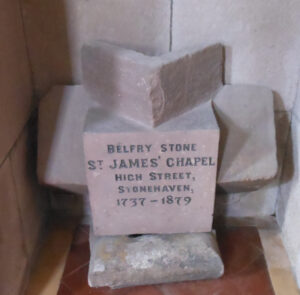
Oak chairs with haircloth
There is a pair of two chairs were probably acquired at the same time as the cathedra. They now reside at either end of the altar rail. Apart from their ornate carving, they a filled with horsehair, and now less comfortable to sit on, but very decorative.
The third chair is said to have been rescued from the old chapel in the High Street. It is in the remembrance area in the north aisle.
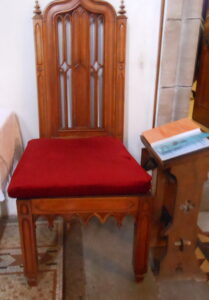
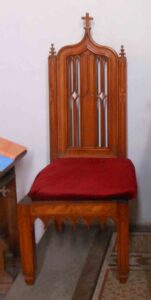
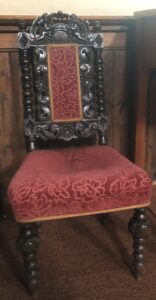
Cathedra
This is the correct term for the Bishop’s ‘throne’, the special chair reserved for when the Bishop visits. The word is the root of the word Cathedral, the senior church in the diocese, which in our case is St Paul’s Cathedral located in the centre of Dundee. It never was in Brechin, despite the name of the diocese. The diocesan name originates before the Reformation.
The carved headboard contains a representation of the shield (or escutcheon) of the Bishop of Brechin.
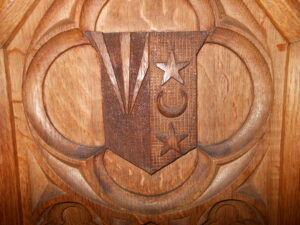
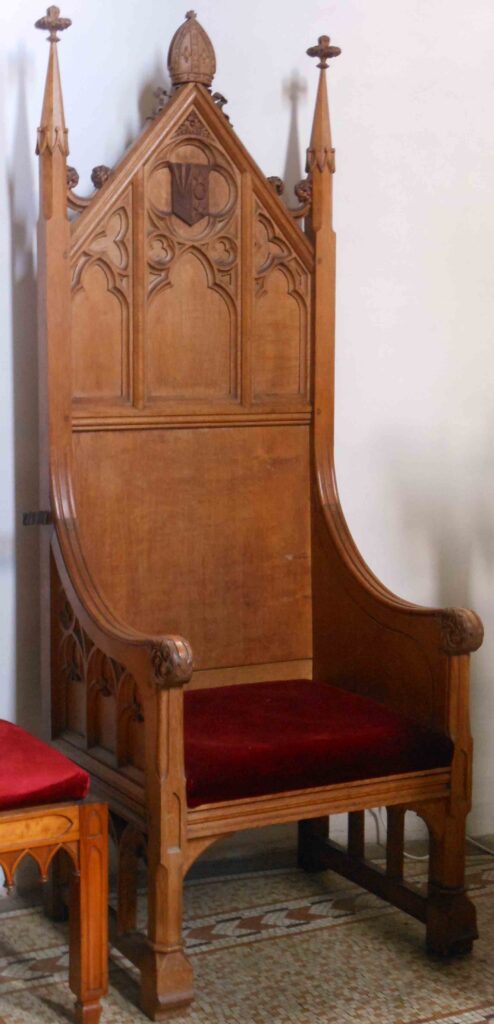
Advent Candle stand
During the season of Advent, we light one candle each Sunday to signify the approach of Christmas, The final central candle is lit a the Midnight Mass on Christmas Eve.
The candles are purple coloured (purple being the liturgical colour of Advent), with the centre one being white (the Christmas season’s liturgical colour).
This stand is a recent acquisition, but the ceremonial is very old.
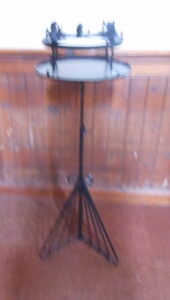
Book of Remembrance
Every Sunday, during the Intercessions, we remember those who have died over the years in that particular week – the ‘Year’s Mind’. Some years ago, a member fo the congregation gifted a beautiful book, and the then Rector, Revd Rita Acarnley, donated the case to display the book. There is one page per day and the pages are turned every day.
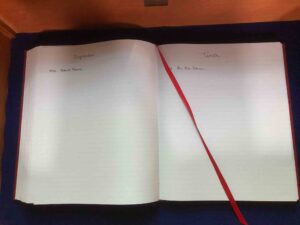
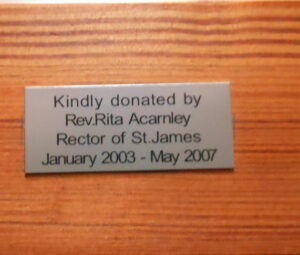
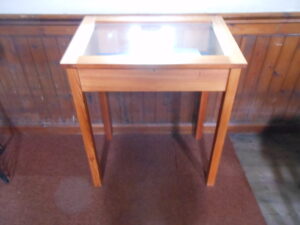
Funeral candlesticks
For most funerals, the coffin is placed in the transept and surrounded by two special candlesticks, one at the head and one at the foot.
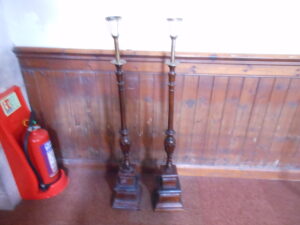
Oak vestment chest
In the Sacristy, there is a large heavy oak chest, probably dating back to the opening of St James. It is specially designed to allow the laying out of the vestments ready for the priest to robe prior to a communion service. The priests do this in a particular way, saying specific prayers as each item is put on, and as part of their personal preparation for the sacred celebration that is about to take place.
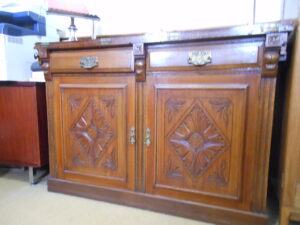
Prayer desks (3)
There are three stand-alone prayer desks in St James. Strictly speaking called a ‘Prie Dieu’ meaning ‘Pray to God’, one is in the Lady Chapel for use by someone leading a service, one is beside the War memorial, and the third is in the remembrance area.
Also shown here (with the Lady Chapel desk) is a chair styled as a Glastonbury chair.
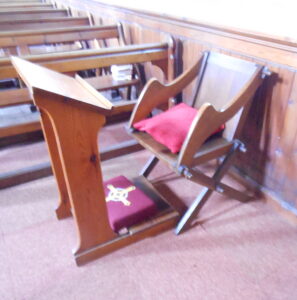
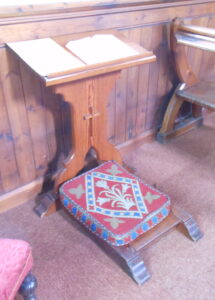
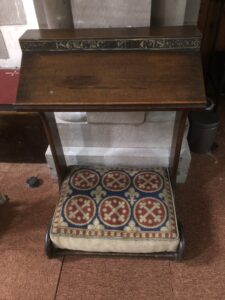
Flower tables (2)
There are two small tables just inside the Nave glass doors, which are often used for flowers, but sometimes for other purposes.
One was donated by the Christie family in memory of Moira Christie who is also remembered on the most south westerly stained glass window.
The other one was in memory of Pat Gray, the mother of a lay reader, Arma Iles.
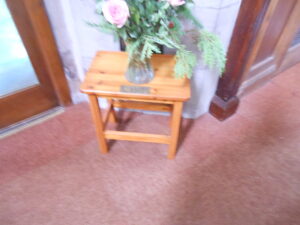
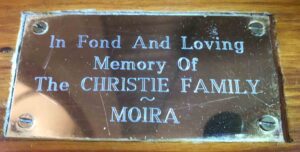
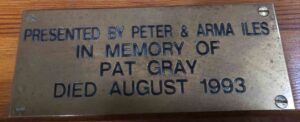
Communion Tables (2)
Beside each altar, there is a small cloth covered table, which is used to place the communion vessels (the ciborium for the bread and the chalice for the wine) before and after their consecration.
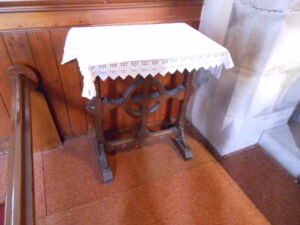
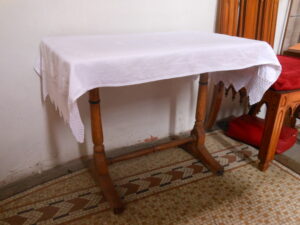
Sanctuary lamps (2)
Above each altar, there is a light (traditionally a candle) to indicate the presence of the consecrated elements in the church. In many churches, these lamps are in an ornate holder hung from the ceiling.. In the case of St James, that is true of the Lady Chapel (although now we use an electric light), but the ceiling of the chancel is too inaccessible for a such an installation, and so we keep a candle beside the aumbry (the small cupboard which is behind the the ornate wooden door built into the reredos) where the elements are kept.
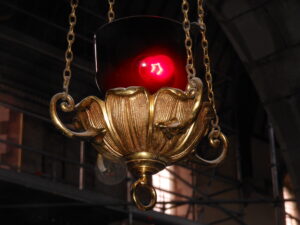
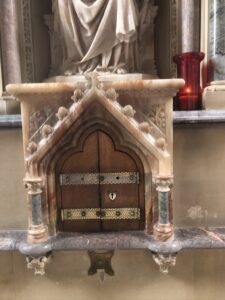
‘Christ Crucified’ plaque
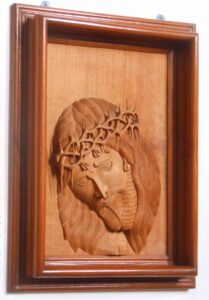
Communion tokens
Until the 1960’s, the main services on a Sunday were Matins and Evensong, and the service of Communion (otherwise known as the Eucharist or Lord’s supper) was less important. Today it is central to our worship. The 1929 Prayer Book rubric states:
And in Cathedral and Collegiate Churches, and Colleges, where there are many Priests and Deacons, they shall all receive the Communion with the Priest every Sunday at the least,
except they have a reasonable cause to the contrary. And ..
It is the duty of every confirmed member of the Church to receive the Holy Sacrament with frequency, and especially to receive it at Easter and at the other Great Festivals of the Church.
As a sign that you wished to take Communion (and thus be a member of the church) you were given a Communion Token When this practice ceased in St James’, some of these tokens were preserved, and inset into a stone cross, which now resides in one of the alcoves in the Baptistry. The token has a cross on one side and the other is inscribed with words of Jesus from the Gospel of St John, Chapter 6, verse 56;
“He that eateth my flesh and drinketh My blood dwelleth in Me and Me in him.”
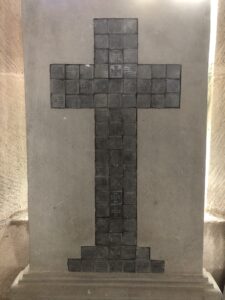
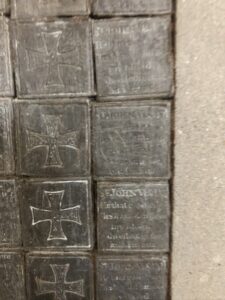
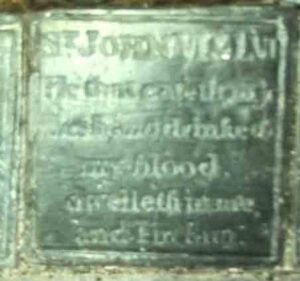
Warden’s wands
The Constitution of St James’ Episcopal Church states that there shall be on the Vestry:
c) one churchwarden to be appointed annually by the Rector (to be known as the Rector’s Warden) ex officio (if constituent member),
d) one churchwarden to be elected by the congregation at the Annual Meeting (to be known as the People’s Warden) ex officio (if constituent member),
Whilst their duties are not specified, the Wardens do have ceremonial wands, should they be asked to join in a formal procession, and these still used on some important occasions.
They are made of polished mahogany, with silver tops, the one (for the Rector’s Warden) with the mitre representing the Bishop’s authority, and the one (for the People’s Warden) with a crown representing the monarchy.
